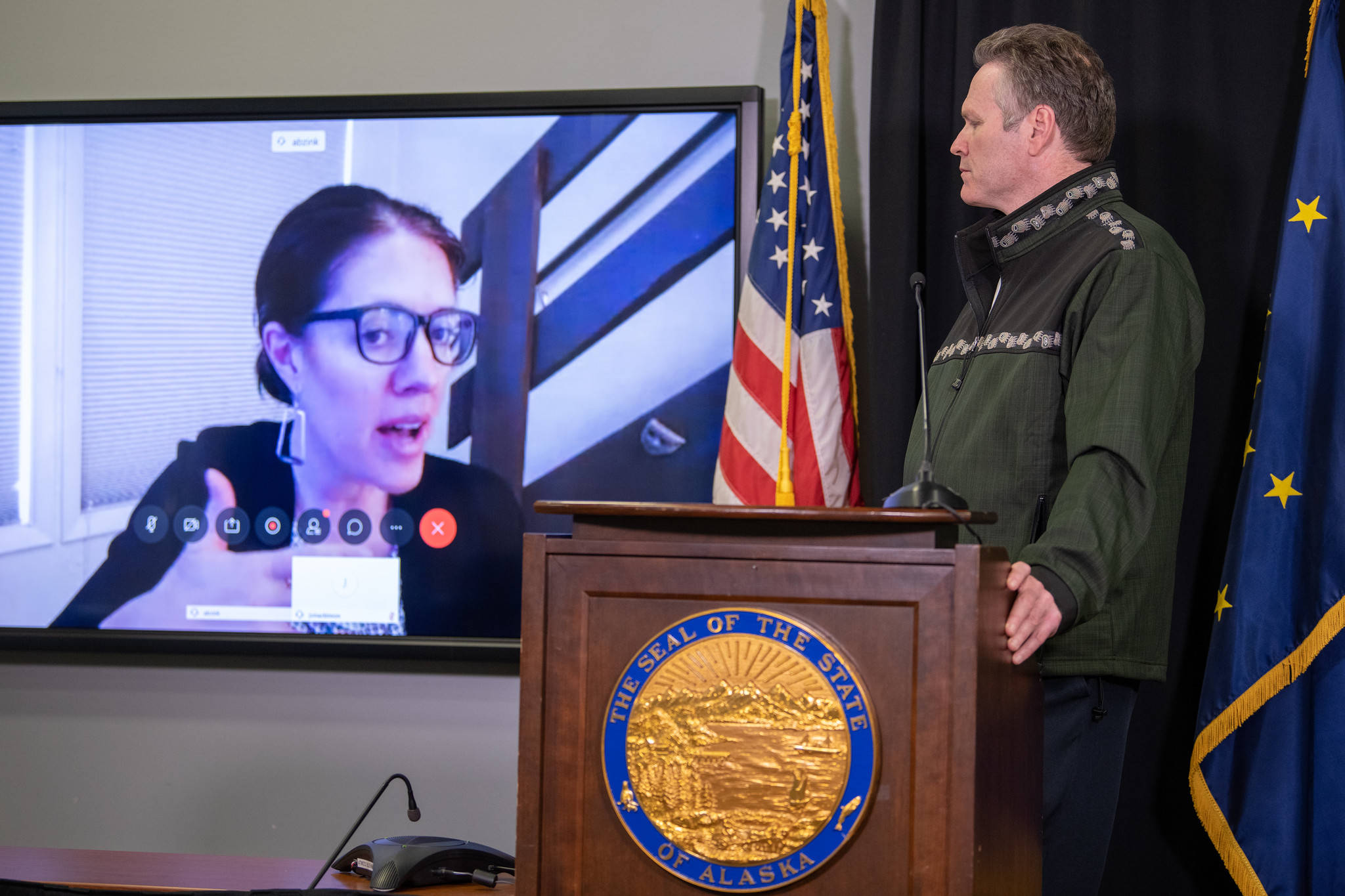An Anchorage woman in her 40s has died as a result of COVID-19, the disease caused by the new coronavirus, the state reported Wednesday. The woman is the seventh Alaskan to die from the virus — two of whom died out of state. There were also four new hospitalizations Tuesday.
The state also reported 13 new confirmed cases, totaling 226 positive cases statewide. Of the new cases, six are in Anchorage, six are in Fairbanks and one is in Palmer. There are 32 recoveries being reported by the state. As of Wednesday, 7,068 tests for COVID-19 have been conducted.
The Anchorage woman who died was admitted to “a local hospital on April 5,” a Wednesday press release from the Department of Health and Social Services said. Her positive test result came back Tuesday.
Dr. Anne Zink, chief medical officer with the state, said the state received 50 rapid Abbott testing devices, 44 of which are being sent to 27 different communities across the state to boost rural testing capabilities. Seward, Soldotna, Homer and Kenai are communities listed to receive the testing machine. Zink said communities will be learning how to run the devices this week.
“This will really help our villages screen and test,” Zink said.
Zink is encouraging Alaskans living in communities with few or no positive cases to remain vigilant and act as if the disease is in the community.
“We all need to assume at this time that this is amongst our communities, for the most part,” Zink said.
The state has received some of the personal protective equipment they requested from the federal government, but worldwide shortages are making some supplies difficult to obtain. Zink said the state is estimating even more equipment than requested will be needed to bolster Alaska’s health care system. Dunleavy said the state is also working to manufacture its own equipment.
The state asked the federal government for 60 ventilators, 139,766 face shields, 317,281 gloves, 1,041,516 gowns, 3,117,328 N95 respirators, 1,113,906 surgical masks, 50 Abbott test kits and 50 powered air purifying respirators.
Out of the 139,766 face shields the state asked for, the federal government sent 6,144 shields. The federal government sent 121,100 gloves — about half of what was requested. Only 9,444 gowns were sent to the state and 165,160 N95 respirators. There were 175,700 surgical masks sent by the federal government. The federal government was able to fulfill in full the requests for ventilators, Abbott tests and powered air purifying respirators.

